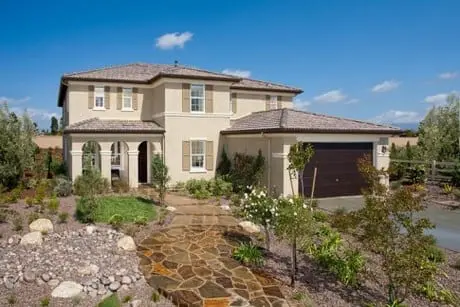Green living is not just a buzzword any more.

Homebuyers are increasingly looking for homes with greater energy efficiency that will save them money on their utilities.
“Buyers seek items that focus on the reduction of monthly utility bills,” said Jill Schwartz, a Maryland-based Realtor with Long & Foster who specializes in green living and building practices. “Here in the Washington, D.C., area, people are getting away from larger homes because they’re tired of paying exorbitant energy bills.”
Statistics back this up. In a 2012 survey, “What Home Buyers Really Want,” conducted by the National Association of Home Builders Economics and Housing Policy Group, three energy-efficient items made the “most wanted” list: Energy Star-rated appliances (94 percent of respondents to top the list), Energy Star rating for home (91 percent) and Energy Star-rated windows (89 percent). However, while 67 percent said they wanted a more energy-efficient home, they didn’t want to pay extra for it.
So, the challenge many real estate agents face is helping clients get the energy efficiency they want in a home, but without the added cost. Part of selling green is understanding the benefits to homebuyers beyond energy efficiency. Here’s what to know:
Green Benefits
Of course, there are those who will go above and beyond for the perfect green home, but for the most part, if a homebuyer is willing to upgrade to an eco-friendly feature, such as new windows, they will want to know what their rate of return will be, or as Schwartz said, “If I put this in, when will I see the benefit?”
For some buyers, purchasing or building an eco-friendly home may be necessary due to health issues, such as chronic respiratory disease or severe allergies. Schwartz said that her job is to educate clients on green products that are cost-effective to install, such as an inexpensive device for the air conditioning system that zaps allergens and dust particles, and will give them that desired rate of return.
New construction offers an opportunity for clients to realize immediate real-time cost-savings for a greener, more energy-efficient home because many of these features, such as Energy Star appliances and better insulation and HVAC systems, are automatically included as a matter of course. New home builders work according to the latest state and local building codes, which tend to promote better energy efficiency and the materials they use are, in many cases, more sustainable and durable.
“Builders are using green features not as a way to stand out anymore,” Schwartz said, “but because competition in the new construction industry has been effective in communicating that it is the right way to build.”
Green Features
As eco-friendly and energy-efficient features become more prevalent and expected, keeping up with an ever-changing array of green products, materials and concepts can also be challenging for real estate professionals.
In addition to those Energy Star-rated appliances and windows, your clients may be looking for homes with non-toxic stains on hardwood floors or low- or no-VOC (volatile organic compounds) paint on the walls. Or your client may ask about the value in installing a tankless water heater or a programmable thermostat or asking for spray-form insulation in their new homes.
Some green features, such as solar panels, are increasingly being included with newly built homes. Builders, such as Century Communities in Colorado, include a lease on solar energy as part of the home’s standard package — and homeowners don’t even have to maintain the solar panel system.
Schwartz said that she is noticing a generational split between older and younger buyers when it comes to the approval or disapproval of exterior features like solar panels. Older owners tend to have greater concerns about the affect on their neighborhood’s home values versus younger homeowners who want and even expect green features that help them reduce their energy costs.
Green Education
Fortunately, real estate professionals wanting to expand their knowledge of green building practices and materials have a number of options to choose from, said Schwartz, who, as the Long & Foster Green Ambassador, helps to educate real estate professionals on the importance of healthy living practices with new construction, renovations and remodeling.
Buyers seek items that focus on the reduction of monthly utility bills. — Jill Schwartz, a Maryland-based Realtor with Long & Foster National Association of Realtors (NAR) members can take courses to receive a Green Designation, after which they can then access continuing education and other materials regarding green real estate issues. In addition, the EcoBroker/Ecosociate program, which receives oversight from the Association of Energy and Environmental Real Estate Professionals, provides another avenue for agents to increase their knowledge of green living.
“Once an agent receives their certification, there is a portal that is dedicated to assisting Realtors with promoting their knowledge of green features directly to their clients,” said Schwartz, who is an EcoBroker and also holds the NAR Green Designation.
She added that agents can also join local networking groups, such as their local chapter of the U.S. Green Building Council or, if they want to go further in their environmental education, they can take a LEED (Leadership in Energy & Environmental Design) certification or a Masters in Green Building course online.
LEED is a green building certification program that recognizes best practices and building strategies, including for new home construction. In the D.C. metro area, where Schwartz works, LEED-certified buildings are becoming more popular in new urban developments districts, she said. “Builders want to partner with me because I understand the intricacies of LEED certification.”
By taking the extra step to increase your knowledge of green living and building, you will be able to not only better serve your clients, but also potentially open up new opportunities for your real estate practice.

